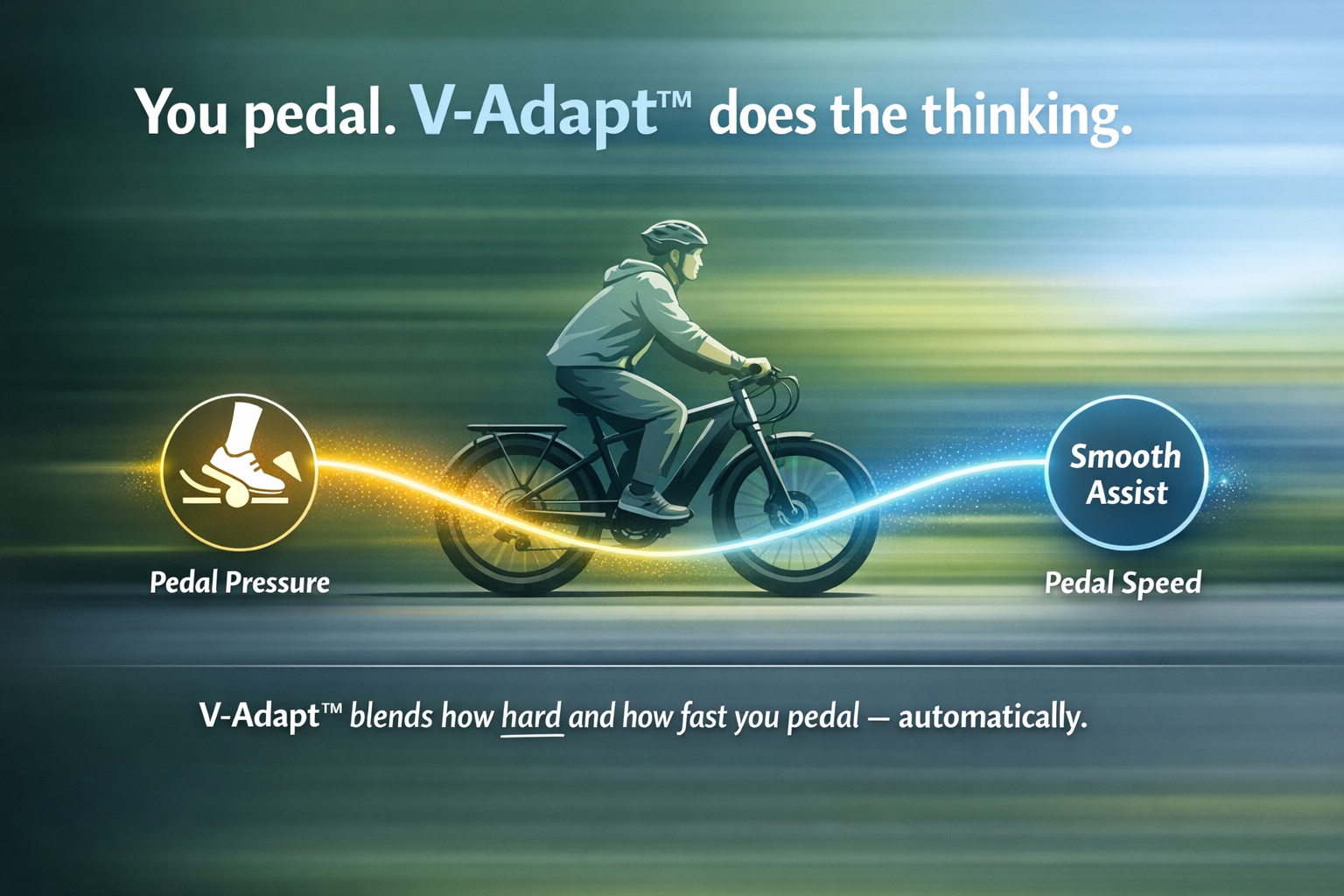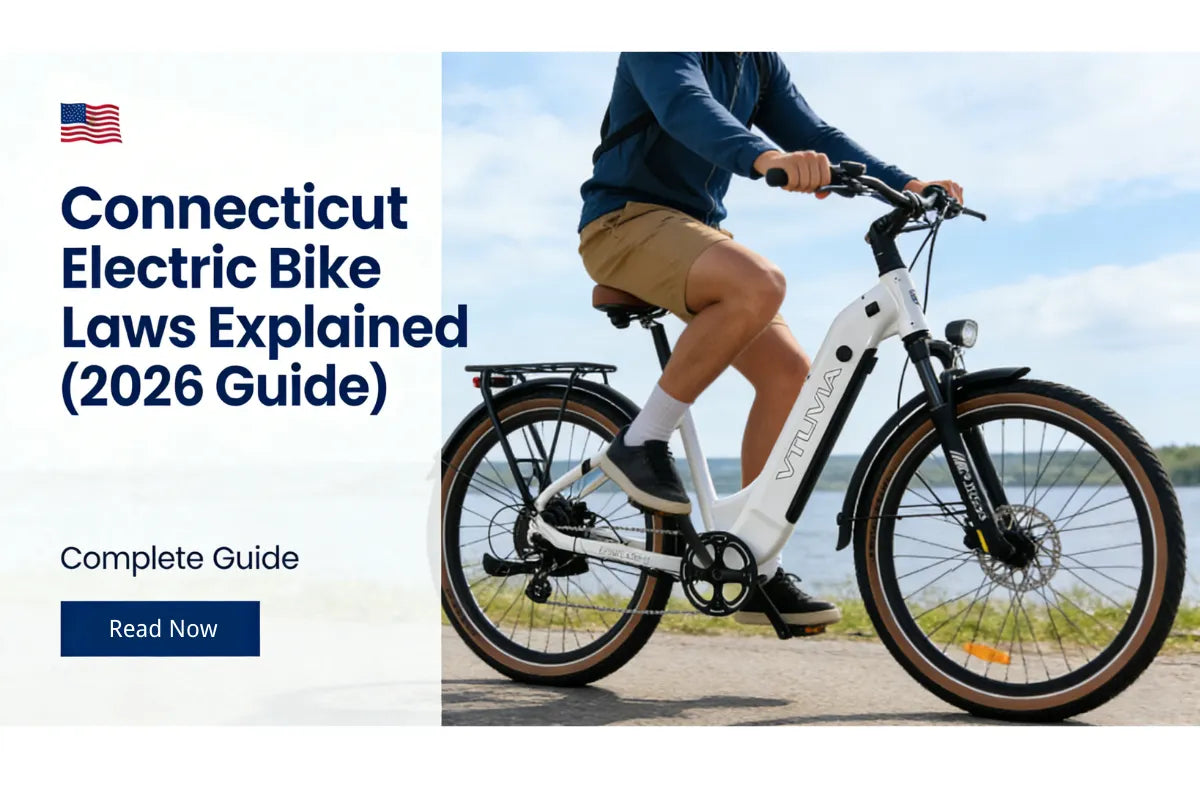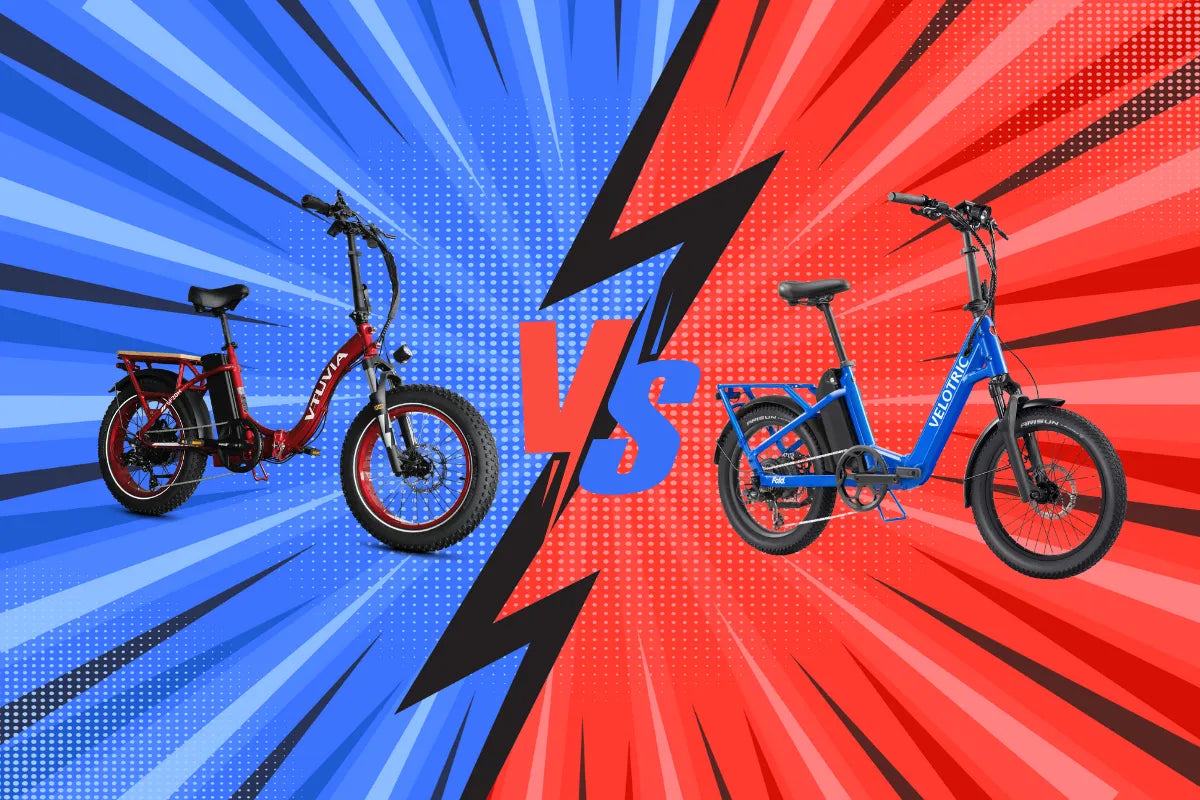
Class 2 Electric Bikes: A Complete Guide
1. Introduction
Electric bikes (e-bikes) have become an essential mode of transportation in modern cities. Their popularity is growing, especially in areas where traditional vehicle traffic is increasingly congested. Many regions now have specific regulations that allow only Class 2 e-bikes to be ridden on public roads. But what exactly is a Class 2 electric bike, and why is it gaining traction in the market?
In this blog post, we will provide an in-depth look at Class 2 electric bikes, discussing their benefits, how they differ from other classes, and the key factors you should consider when choosing one for your daily commute or leisure ride.
2. What Are Electric Bikes (E-Bikes) and How Are They Classified?
An electric bike is essentially a bicycle equipped with a battery-powered motor that assists with pedaling, making cycling more accessible and less strenuous. E-bikes are classified into different classes based on their design and the level of motor assistance they provide.
The three main classifications of electric bikes are:
-
Class 1 E-Bikes:
Class 1 e-bikes are equipped with a pedal-assist system, which means the motor activates only when you are pedaling. The motor will assist in making pedaling easier and less tiring. However, once you reach a speed of 20 mph (32 km/h), the motor will automatically cut off, and you will have to rely solely on your pedaling to continue. These bikes are ideal for riders who enjoy a more traditional cycling experience but want the extra boost that an electric motor provides to help them navigate hills, wind, or longer distances.
-
Class 2 E-Bikes:
Class 2 e-bikes offer both pedal assist and throttle control. In addition to the pedal assist that helps you when you are pedaling, these bikes are equipped with a throttle, which allows you to control the motor directly with the push of a button or twist of a throttle, without having to pedal. This feature is particularly helpful for riders who may not be able or want to pedal all the time, such as those with limited mobility, or when you just want a break from pedaling. Like Class 1 e-bikes, Class 2 bikes are also limited to a maximum speed of 20 mph (32 km/h), ensuring a safer ride at lower speeds, making them suitable for urban environments and short commutes.
-
Class 3 E-Bikes:
Class 3 e-bikes are similar to Class 1 bikes in that they only provide pedal assist. However, the key difference is that Class 3 bikes are designed to assist you at higher speeds. These bikes can assist you up to 28 mph (45 km/h), which makes them a great option for longer commutes, especially in areas where you need to keep up with traffic or travel across more varied terrain. Class 3 e-bikes are often equipped with additional safety features, such as enhanced lighting systems and stronger brakes, to accommodate higher speeds. These bikes are perfect for experienced riders or commuters who need a quicker, more efficient mode of transportation for longer distances or time-sensitive travel.
3. Differences Between Class 1, Class 2, and Class 3 Electric Bikes
To better understand the differences, let’s break down the main features of each class:
-
Class 1 E-Bikes: These bikes only provide pedal assist, meaning the motor helps you only when you are pedaling. The motor cuts off when you reach 20 mph (32 km/h).
-
Class 2 E-Bikes: In addition to pedal assist, Class 2 bikes come equipped with a throttle. This means you can activate the motor without pedaling, offering a convenient option for riders who need extra assistance. These bikes also have a 20 mph (32 km/h) speed limit.
-
Class 3 E-Bikes: Like Class 1 bikes, Class 3 e-bikes only provide pedal assistance, but they can reach speeds up to 28 mph (45 km/h), making them ideal for faster commuting on longer routes.
The primary differences are the presence of a throttle and the top speed, which impacts the types of environments and riders each class is best suited for.
| Feature | Class 1 E-Bikes | Class 2 E-Bikes | Class 3 E-Bikes |
|---|---|---|---|
| Pedal Assist | Yes, provides motor assistance when pedaling | Yes, provides motor assistance when pedaling | Yes, provides motor assistance when pedaling |
| Throttle | No, motor only activates when pedaling | Yes, throttle allows motor control without pedaling | No, motor only activates when pedaling |
| Speed Limit | 20 mph (32 km/h) | 20 mph (32 km/h) | 28 mph (45 km/h) |
| Usage Type | Ideal for traditional cyclists, city commuting | Suitable for riders who want both pedal assist and throttle control, ideal for city commuting | Best for commuters who need higher speeds, longer distances |
| Recommended for | Riders seeking a traditional cycling experience | Riders looking for convenience and less pedaling effort | Riders looking for speed and efficiency in longer commutes |
| Regulations | Allowed on most bike paths and roads | Allowed on most bike paths and roads | May be restricted on certain bike paths due to higher speeds |
4. Definition and Features of Class 2 Electric Bikes
Class 2 electric bikes are known for their combination of pedal assist and throttle control, offering riders more versatility and comfort during their rides. Here’s a breakdown of key features:
-
Throttle System: With a throttle system, riders can accelerate without pedaling, making it ideal for those who need help starting off or don’t want to exert as much effort while cycling.
-
Convenience for Daily Use: The throttle functionality makes it particularly convenient for commuting or running errands around the city, where continuous pedaling may not always be necessary.
-
Speed Limit: Like other e-bikes in the Class 2 category, these bikes are limited to a top speed of 20 mph (32 km/h), ensuring a safe and controlled riding experience.
5. Advantages of Class 2 Electric Bikes
Class 2 e-bikes offer several benefits, making them an attractive choice for a wide range of users:
-
Convenience: Riders can choose to pedal or use the throttle, making the bike suitable for different levels of physical ability. This feature makes Class 2 bikes accessible to everyone, including those with limited stamina.
-
Eco-Friendly: By replacing traditional vehicles, Class 2 e-bikes contribute to reducing carbon emissions and promoting greener transportation alternatives.
-
Versatility: These bikes are great for different age groups, from younger riders to older individuals, due to their ease of use and low physical demands.
-
Urban Commuting: Class 2 e-bikes are ideal for urban environments, where traffic congestion is a concern, and shorter trips are common.
6. Key Factors to Consider When Buying a Class 2 Electric Bike
Before purchasing a Class 2 e-bike, consider the following key factors to ensure you choose the best one for your needs:
-
Battery Life: Pay attention to the battery capacity and the estimated range. A larger battery capacity generally translates to longer rides between charges.
-
Motor Power: The motor power impacts the bike’s stability and climbing ability. A more powerful motor (750W or higher) is better suited for hilly areas or heavier riders.
-
Weight and Portability: If you plan to store your bike in tight spaces or need to carry it around, consider the bike's weight and whether it’s foldable.
-
Regulatory Requirements: Make sure the bike complies with the local regulations governing e-bikes. For instance, some areas may have restrictions on motor power or speed limits.
7. Use Cases for Class 2 Electric Bikes
Class 2 e-bikes are versatile and can be used for various purposes:
-
Urban Commuting: Class 2 e-bikes are perfect for navigating through city traffic, providing a fast, convenient, and eco-friendly transportation option.
-
Leisure Rides: They are also great for casual cycling around the neighborhood or through parks, offering a relaxed experience with less physical effort.
-
Daily Shopping: The throttle's added convenience makes these bikes ideal for running errands or carrying small loads, like grocery shopping.
8. VTUVIA Class 2 E-bikes for Sale 👉 View All
Best Folding Class 2 Electric Bike: VTUVIA SF20H

Highlights
- ✓ Speed: Class 2
- ✓ Battery range: Up to 70 miles
- ✓ Motor: 750W/Peak 1200W/ 85Nm
- ✓ Max Load: 330 lbs
- ✓ Throttle: Yes
- ✓ Warranty: 2-Year Warranty
View more about VTUVIA SF20H
Best Off-road Adventure Class 2 Electric Bike: VTUVIA SN100

Highlights
- ✓ Speed: Class 2
- ✓ Battery range: Up to 70 miles
- ✓ Motor: 750W/Peak 1200W/ 85Nm
- ✓ Max Load: 400 lbs
- ✓ Throttle: Yes
- ✓ Warranty: 2-Year Warranty
View more about VTUVIA SN100
Best City Commuter Class 2 Electric Bike: VTUVIA CMB

Highlights
- ✓ Max speed: Class 2
- ✓ Battery range: Up to 80 miles
- ✓ Motor: Mid-drive 500W/ 175Nm
- ✓ Max Load: 300 lbs
- ✓ Throttle: Yes
- ✓ Warranty: 2-Year Warranty
View more about VTUVIA CMB
Best Step-thru All-Terrain Class 2 Electric Bike: VTUVIA Reindeer 2.0

Highlights
- ✓ Max speed: Class 2
- ✓ Battery range: Up to 70 miles
- ✓ Motor: 750W/ 85Nm
- ✓ Max Load: 400 lbs
- ✓ Throttle: Yes
- ✓ Warranty: 2-Year Warranty
View more about VTUVIA Reindeer 2.0
9. Class 2 Electric Bikes Laws of Different States
In the United States, several states and cities have enacted strict regulations regarding the use of electric bikes. Many areas have explicitly stated that only Class 2 electric bikes are allowed on public roads, especially in regions with strict speed, power systems, and safety requirements. Here are some examples of places with regulations on Class 2 e-bike usage:
| Region | Regulations & Requirements |
|---|---|
| California | California was one of the first states to introduce e-bike regulations. Class 2 e-bikes are allowed on most city streets and public roads with a speed limit of 20 mph (32 km/h), provided they meet the state's safety standards. |
| New York City | In New York City, Class 2 e-bikes are allowed on most streets and bike lanes. They must be controlled by either pedal assist or throttle mode, with a speed limit of 20 mph (32 km/h). |
| Florida | Florida permits Class 2 e-bikes on public roads and some bike lanes, requiring them to follow traffic rules similar to those for traditional bicycles. |
| Colorado | In Colorado, Class 2 e-bikes are allowed on bike paths, city streets, and some parks. The bikes must be certified and meet all safety requirements. |
| Washington State | Washington State allows Class 2 e-bikes on public roads, with specific age restrictions and safety requirements for riders. Several cities have laws allowing Class 2 e-bikes on city streets and rural roads. |
| Chicago (Illinois) | In 2019, Chicago passed legislation allowing Class 2 e-bikes on city streets and bike lanes. This regulation made electric throttle and pedal-assist Class 2 e-bikes legal for use within the city. |
The common theme among these regions is that they generally allow Class 2 e-bikes on urban and rural roads but sometimes impose additional restrictions on speed, usage environments, and rider age. As e-bikes are popular, other states and cities may follow suit with similar regulations.
10. Conclusion
Class 2 electric bikes offer the perfect balance between pedal assist and throttle functionality, making them ideal for urban commuting, leisure rides, and running errands. Their versatility, eco-friendliness, and ease of use make them suitable for many riders, including older individuals or those with limited physical stamina.
Considering factors such as battery life, motor power, and portability, you can find the ideal Class 2 electric bike that suits your needs and budget. Whether you’re looking for an eco-friendly alternative for commuting or simply want a convenient way to get around, a Class 2 e-bike is an excellent choice.





Share:
How Fast Can an Electric Bike Go? Exploring Speed and Performance of VTUVIA E-Bikes
How Much Is an E-Bike? How to Buy an E-Bike at Low Price? - VTUVIA